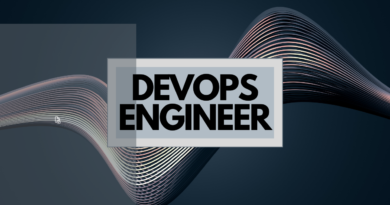Serverless CI/CD Modern Application Development on AWS

Serverless CI/CD Modern Application Development on AWS or Cloud-Native Modern Application Development and Design Patterns on AWS are important. Modern application development using containers and serverless technologies can help your organization accelerate innovation. We will explore best practices and design patterns that you can use to build your modern application in the AWS Cloud.
Automating Deployment with CI/CD
Rapid innovation is vital for modern companies, which must drive growth. By making the most of their human resources, seeking out new opportunities, and nurturing new ideas. Digital technology is at the core of this rapid innovation.
Companies strive to innovate quickly to deliver the most value they can to customers as quickly as possible. To achieve this, modern applications use continuous integration and continuous delivery (CI/CD) to automate the entire release process. Basically, building and running tests, promoting artifacts to staging, and the final deployment to production. CI/CD can also automate certain security controls, such as scanning for known vulnerabilities and performing static analysis. The full CI/CD pipeline can consist of an arbitrary number of quality gates and controls.
By automating the full build/test/deploy process, it becomes not only more reproducible, but faster as well. In addition, you can do this frequently, meaning that each individual deployment consists of fewer changes and less risk. Instead of being a high-risk, all-hands-on-deck event, CI/CD allows deployments to production to be mundane affairs. In addition, high priority security fixes or config changes no longer require special hot patches, but can flow through the standard pipeline
Capabilities of Modern Applications
- Modern applications should be: Secure – It is crucial for any application to be secure. Thus, you can implement various security measures within the application. They should be in all layers and at each stage of the life cycle for Serverless CI/CD Modern Application Development on AWS.
- Resilient – A modern application is resilient. For example, if an application encounters a failure when it calls an external data source, it should retry or otherwise handle the exception. It should not become unresponsive—while continuing to operate with a graceful degradation of functionality.
- Elastic – By flexibly scaling out and scaling in depending on the rate of requests or other metrics. Modern applications can optimize cost without missing business opportunities. Automating the process of scaling out and scaling in, or using managed services that include auto scaling functionality. Therefore, reduces routine administrative burden and prevents the extreme disruption of outages.
- Modular – Modern applications are modular, with high cohesion and loose coupling. Larger systems should not be single monoliths, but should be separated along domain boundaries into different components. Each component with a distinct responsibility. Furthermore, this separation allow for greater availability and scalability. Thus, frequent releases are easier, because different components can be deployed independently.
- Automated – You can develop modern applications must be automated to enable frequent, high-quality releases. In addition, manual processes can introduce dependence on individual people. For example, requiring a single administrator to make deployments. To support agile development and frequent releases, modern applications should be deployed through continuous integration and continuous delivery (CI/CD) pipelines. Basically, when CI/CD code is pushed to version control, tests are run in a clean CI environment.
Interoperable – In modern applications, each service must interact with other services. Moreover, it should also provide the resources requested of it, and perform the tasks expected of it. It must be possible to add functionality to different services independently and continue to release frequently, without impacting other services. This means that services must keep their implementation details private, exposing all required functionality through robust, public APIs. These public APIs must also be stable and backward compatible to allow for independent releases
Learn more about our AWS Certification courses and DevOps Engineer E-Degree program




